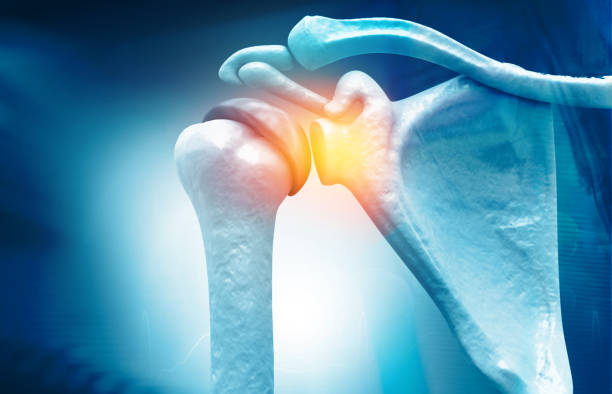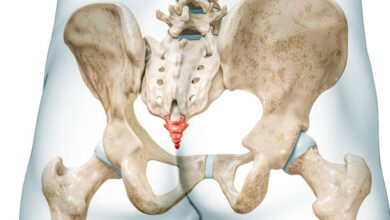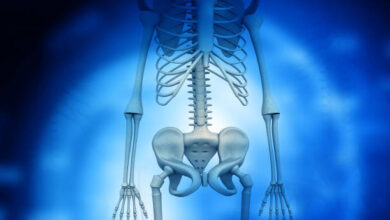
The clavicle, or collarbone, has an important purpose that is frequently overlooked when considering vital biological activities. Nonetheless, this bone contributes significantly to the formation of our shoulder girdle, which serves to join our upper limb to the body. Its significance is made abundantly clear when something goes wrong with it. In such instances, clavicle reduction surgery is one potential remedial technique. The fundamentals of this procedure will be covered in this post, along with information on possible dangers, advantages, post-operative care, and the requirement for follow-ups.
Knowing the Function of the Clavicle
Consider the clavicle as a bridge that joins your scapula, or shoulder blade, to your sternum or breastbone. It is a crucial component of the shoulder girdle, preserving the essential space between your upper limb and thorax, which allows your arms to move freely. Beyond mobility, however, the clavicle has a protective role by guarding vital blood arteries and nerves just beneath it.
- However, because of its location directly beneath the skin, the clavicle is vulnerable to injury even with its essential duties. These injuries may result from medical disorders that weaken bones, or they may be the result of stressful events. In these situations, the clavicle may fracture or become dislocated; clavicle reduction surgery may be necessary to correct the condition. A serious sports injury, for example, may induce a dislocated clavicle, which severely limits arm movement and is extremely painful. A clavicle reduction could successfully realign the bone in this case, regaining function and offering much-needed relief.
When Is Surgery Needed for Clavicle Reduction?
Imagine that you are in a car accident or that you have a serious fall while out on a hike on the weekend. Your collarbone, the clavicle, may break or dislocate as a result of the collision in any case. Or perhaps there isn’t any external influence at all. Disorders that compromise bone density can potentially be the cause, with the same results.
- Surgery for clavicle reduction may be necessary in any of these situations. However, when precisely is this process required? The degree of bone displacement and the effectiveness of non-surgical therapy hold the key to providing an answer. If the misalignment of your clavicle is too severe to fix with braces or slings, or if the displacement is too great, clavicle reduction surgery will probably be necessary to get your shoulder back to normal.
It’s about fixing the issue, avoiding long-term consequences, and—above all—restoring your ability to move freely and lead a regular life.

What Is Involved in Clavicle Reduction Surgery?
Stepping into the clavicle reduction surgery operating room would reveal a thorough process intended to repair your broken or misaligned collarbone. Your journey to healing starts with a comfortable slumber brought on by general anesthesia.
- After ensuring your comfort, your surgeon—who serves as your guide throughout the process—carefully cuts over the troublesome area. Their objective? is to bring the misplaced bone pieces back together in a manner that replicates their initial alignment. Now that the puzzle pieces are back together, the surgeon secures the bone segments using strong plates, screws, or pins as their preferred tools.
- Your injury’s complexity will determine how long this surgical journey takes, although it usually takes between one and two hours. And there you have it, a wise look into the technical realm of clavicle reduction surgery, a process whose only goal is to, very literally, put you back together. As an example, suppose you had a shattered collarbone bone resulting from an accident sustained during athletics. In this case, reconstructing the collarbone and restoring complete function to your shoulder would require clavicle reduction surgery. Consider an athlete who suffers a collarbone fracture as a result of a strong impact during a fierce rugby match. In addition to fixing the broken bone, a clavicle reduction treatment would allow him to resume full mobility in the game eventually.
Possible Hazards and Issues with the Surgery
There are always possible risks associated with surgery, and clavicle reduction surgery is no exception. It’s normal for your thoughts to immediately turn to “what ifs” when you hear the term “surgery.” What happens if an infection occurs? What happens if the bleeding is severe? Or may nerve injury be present? Your system could not even cooperate with the anesthetic.
- Remember that the fracture healing process may take an unexpected turn, or the surgical hardware may prove to be more of an inconvenience than a help. These are all legitimate worries that are regarded as possible dangers and adverse effects of clavicle reduction surgery.
- Now, it’s important to remember that these hazards are minimal before allowing anxiousness to impair your decision-making. Surgeons meticulously plan every surgical procedure, taking every precaution to reduce any complications. They fight these odds every day to make sure your road to recovery is as clear-cut and trouble-free as possible. Therefore, keep in mind that while the possible consequences could seem overwhelming, they’re not common. Your surgical team is your ally; they are always trying to minimize these dangers.
The Advantages of Having Surgery for Clavicle Reduction
With all the risks involved, one may wonder why anyone would consider clavicle reduction surgery. The procedure’s significant advantages hold the key to the solution. Imagine being free to use your shoulder to its full potential and being relieved of the constant, agonizing discomfort that comes from a misplaced clavicle. This is more than just a pipe dream with clavicle reduction surgery; it’s a possibility.
- By realigning your collarbone, this procedure helps to give your shoulder girdle harmony and balance again. This entails getting back the extensive range of motion in your arms that the accident may have taken away from you. You’ll be able to swing, raise, and extend your arms without any difficulty once more.
- It goes beyond simple movement as well. Another important benefit is the lessening of pain. After surgery, the stinging jabs with every movement, and the searing aches begin to subside. This path can help you regain your comfort and lead a pain-free life.
- However, there’s more! In addition, the surgery helps avoid any unattractive deformities that can result from a clavicle fracture or dislocation. Additionally, it provides a layer of defense for the blood arteries and important nerves that nestle behind the collarbone.
- Essentially, clavicle reduction surgery is your pass to resume your previous level of performance. It’s about getting back to your routine and engaging in your regular activities without the specter of pain or limited mobility hovering over you. And for that, my dear readers, you should think about taking it on.
Recovery and Post-Operative Care Process
- As you leave the operating room and begin the path to recovery, you must proceed with extreme caution. Imagine yourself savoring a calm rest after clavicle reduction surgery, with your shoulder tenderly held in the safe confines of a sling. This immobilization period, which lasts for a few weeks, aids in the healing process and guards against more injuries.
- Discomfort will inevitably surface after surgery. But do not worry! Similar to an unseen hero, painkillers will protect you from these painful episodes and work to keep you comfortable.
- But that’s not where the narrative ends. Presenting physical therapy, your devoted travel companion. It’s a crucial component of your recovery plan, helping to strengthen and increase the range of motion in your shoulder.
- Recall that recovery is a journey, not a race. Although the recuperation period usually lasts several months, it can take longer based on your particular health and the extent of your injuries. Thus, it’s critical to pay attention to your body, respect its healing process, and give it the time it requires.
Like any worthwhile journey, your recovery process will demand perseverance, hard work, and an optimistic outlook. And you’ll be well-equipped to go down that road with the correct post-operative care.

The Value of Staying in Touch with Your Surgeon
After clavicle reduction surgery, see every follow-up visit with your surgeon as a milestone on your path to full recovery. These appointments are important checkpoints to make sure you’re headed in the right direction. Consider the surgeon to be your navigator, closely observing the course of your recovery and prepared to intervene if needed.
- In these consultations, your surgeon evaluates your recovery while carefully analyzing the appearance and functionality of your shoulder. This careful examination aids in the early detection and management of possible issues, preventing them from developing into more significant obstacles later on.
- Furthermore, these visits involve adjustment in addition to observation. Depending on how your body is healing, your surgeon may need to modify your rehabilitation schedules. This can entail modifying your physical therapy regimen or possibly your prescription. If sutures or surgical hardware were used, their removal may also be necessary at a follow-up consultation. Therefore, don’t undervalue the significance of these follow-up consultations. They serve as your own customized rest stations, making sure you’re traveling quickly and skillfully along the recovery highway. And never forget that your surgeon is your ally, cheering you on and dedicated to seeing you through to the other side and returning to a life free of pain and limited mobility.




Many people use their lotteries to improve money
for precious initiatives that improve education, public infrastructure and cultural services.
Once the lottery will be performed by you, you’re helping to finance these
programs while you account your own ambitions of succeeding
it big. Have fun and all the best!
Thank You Very Much. I am very happy that you have commented. if you want to publish any kind of content of yours or you have any desire to make such content publish, then please contact us. We will customize the content for you. Will Publish in which your name will be mentioned.
Contact Us:
E-Mail: shineseoagency@gmail.com
Website: shineseoagency.com
WhatsApp No: +923054067093
Regards: SHINE SEO AGENCY